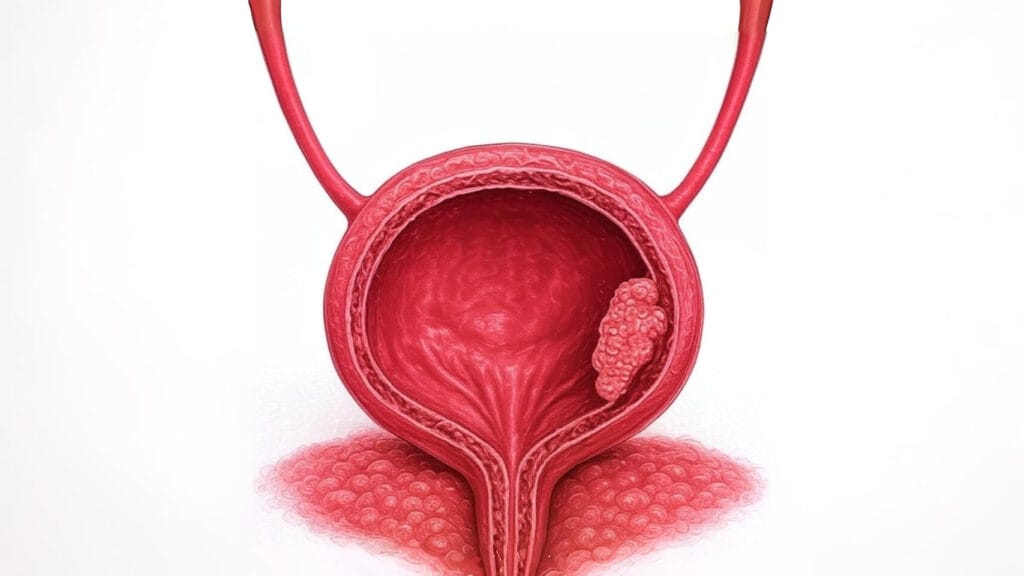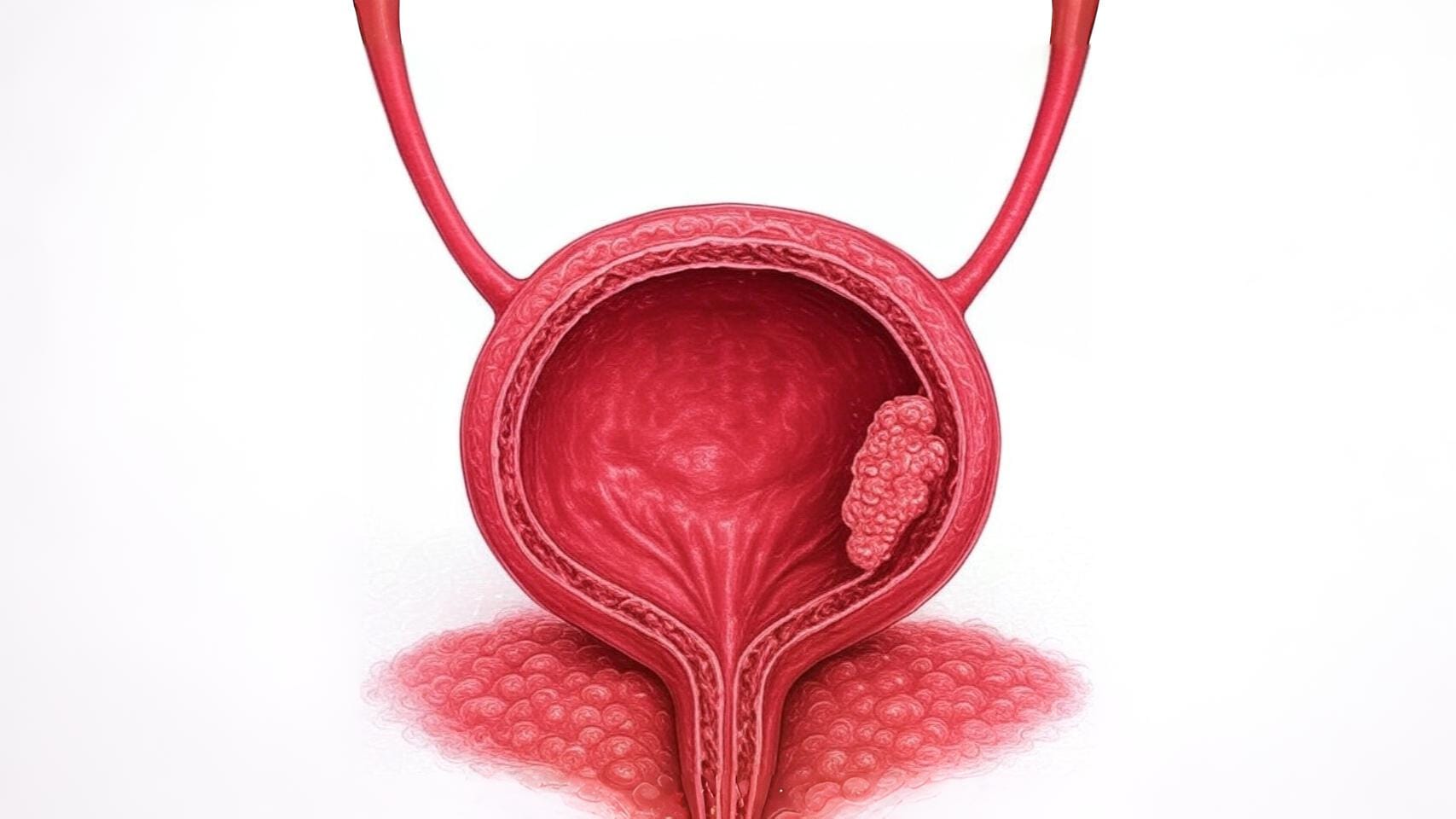
Your body speaks in whispers before it shouts. For bladder cancer, those whispers often come in the form of subtle, easy-to-dismiss symptoms. The problem? Ignoring them can cost you. Let’s talk about the five warning signs that demand your attention—not tomorrow, not next week, now—because catching bladder cancer early can mean the difference between a straightforward treatment and a life-altering battle.
1. Blood in Your Urine (Hematuria): The Red Flag You Can’t Unsee
Let’s cut through the noise: blood in your urine is never normal. It’s your body’s version of a flashing neon sign.
What it looks like:
- Gross hematuria: Urine turns pink, red, or cola-colored. Sometimes it’s streaky, like rust in water. Rarely, clots appear—small, dark, and unsettling.
- Microscopic hematuria: No visible color change. Only detected via urine dipstick or lab tests during a checkup.
Why it happens:
Bladder tumors are fragile. They bleed as they grow or rub against the bladder wall. The blood mixes with urine, creating that telltale hue. But here’s the twist: the bleeding isn’t constant. You might see blood one day, clear urine the next, then blood again weeks later. This on-and-off pattern lulls people into complacency. Don’t fall for it.
What else could it be?
- UTIs: Blood + burning = classic infection. But if antibiotics don’t fix it, think deeper.
- Kidney stones: Agonizing pain that radiates to the back. Blood is a sidekick, not the main event.
- Exercise-induced: Marathon runners sometimes see red after extreme exertion. It resolves in 72 hours.
The cancer connection:
Only 3-5% of gross hematuria cases are cancer, but that’s still 3-5% too many to gamble with. Smokers? Your risk doubles. Ignoring blood because “it went away” is like ignoring a smoke alarm because the fire died down.
Action step:
- Track it: Note dates, color, and accompanying symptoms. A photo (yes, really) can help your doctor.
- Demand a cystoscopy: A 2-minute scope exam can spot tumors hiding in your bladder.
2. Urinating More Often Than You Check Your Phone (Frequency)
If you’re clocking bathroom trips like a Uber driver logs miles, pay attention.
What’s “normal”:
- Most people pee 4-7 times daily.
- Nighttime peeing (nocturia): 0-1 trips if you’re under 60.
What’s suspicious:
- Daytime: Peeing every hour, even with normal fluid intake.
- Nighttime: Waking 2+ times to urinate, especially if it’s new.
Why cancer causes this:
Tumors irritate the bladder’s nerve-rich lining, sending false “FULL” signals to your brain. Imagine your bladder as a hyperactive car alarm—triggered by a breeze, not a break-in.
But couldn’t it just be…?
- Diabetes: Yes, excess glucose pulls fluid into urine. But you’d also feel thirsty and fatigued.
- Overactive bladder (OAB): A common mimic. But OAB rarely appears out of nowhere in older adults without triggers.
The tipping point:
Frequency + blood = urgent evaluation. Frequency alone? Still warrants a urine test.
3. The “Gotta Go NOW” Urgency That Feels Like a Fire Drill
This isn’t “I can hold it.” This is “If I don’t find a toilet in 30 seconds, there will be consequences.”
What it feels like:
- A sudden, crushing need to pee, even if you just went.
- Anxiety in places without bathrooms (planes, traffic jams).
- Sometimes, leakage before you reach the toilet.
Why tumors trigger this:
Cancerous lesions disrupt the bladder’s smooth surface, creating bumps that jab nerve endings. Your bladder panics, thinking it’s at capacity when it’s barely half-full.
The silent red flag:
Urgency often pairs with incomplete emptying (see #5). You rush to pee, but only a dribble comes out. It’s like a faulty faucet—pressure without flow.
Don’t self-diagnose:
- UTIs: Urgency + burning. Clears with antibiotics.
- Interstitial cystitis: Chronic bladder pain, but no blood.
- Prostate issues (men): Difficulty starting urine stream, not just urgency.
4. Burning or Pain When You Pee (Dysuria)
That searing sensation isn’t just a nuisance—it’s a clue.
The cancer angle:
Tumors erode the bladder lining, exposing raw tissue to acidic urine. It’s like pouring lemon juice on a scraped knee.
Gender nuances:
- Men: Pain might linger in the penis after urination.
- Women: Often misdiagnosed as recurrent UTIs. If cultures are negative, push for imaging.
Key detail:
Painless hematuria is classic for cancer, but pain + blood doesn’t rule it out. In fact, it could mean the tumor has invaded deeper layers.
Rule-outs:
- STIs: Chlamydia/gonorrhea cause dysuria + discharge. Get tested.
- Kidney stones: Pain peaks in waves, often in the back/side.
5. The Invisible Bully: Incomplete Emptying
You pee, but your bladder still feels like a overstuffed suitcase.
Why it happens:
Tumors near the bladder neck or urethra act like dams. Urine pools behind them, leaving you with a lingering “need to go.”
Risks of stagnation:
- Infections: Stagnant urine breeds bacteria.
- Bladder stones: Mineral buildup from residual urine.
- Kidney damage: Backed-up urine can reflux into kidneys.
How to test for it:
A post-void residual (PVR) ultrasound measures leftover urine after you pee. >100mL is abnormal.
The hidden link:
Incomplete emptying often pairs with weak stream or straining. Men might blame the prostate, but bladder cancer can mimic BPH.
When to See a Doctor
- Any blood in urine, even once.
- Symptoms lasting >48 hours without improvement.
- Recurring UTIs that antibiotics can’t shake.
Bladder cancer is a shape-shifter. Its symptoms mimic everyday annoyances, but here’s what sets it apart: Persistence. Benign issues resolve; cancer escalates.
Why Early Action Matters
Bladder cancer is a master of disguise. It’s why 50% of cases are caught early (confined to the bladder lining), but 1 in 3 have already invaded deeper layers by diagnosis. Survival rates plummet from 96% to 69% once muscle is involved.
The Bottom Line
These five signs are your body’s Morse code. Decode them early, and bladder cancer becomes a manageable chapter in your life. Wait, and it becomes the plot twist no one wants.
Remember:
- Blood in urine = non-negotiable doctor’s visit.
- Symptoms that outlast a UTI treatment = escalate to a urologist.
- Smoking history + any symptom = fast-track evaluation.
Explore what causes bladder cancer—because knowing the risks (like smoking or chemical exposures) arms you to fight smarter.
FAQs
Q: Can bladder cancer symptoms come and go?
A: Yes. Hematuria might vanish for weeks, lulling you into false security. Never assume it’s “gone.”
Q: I’m a woman—can I still get bladder cancer?
A: Absolutely. While men are 4x more likely, women face higher misdiagnosis rates. If your “UTI” isn’t clearing up, demand a cystoscopy.
Q: What causes bladder cancer? Explore bladder cancer causes here.
A: Smoking is the #1 culprit (responsible for 50% of cases). Chemical exposures, chronic inflammation, and genetics also play roles.


